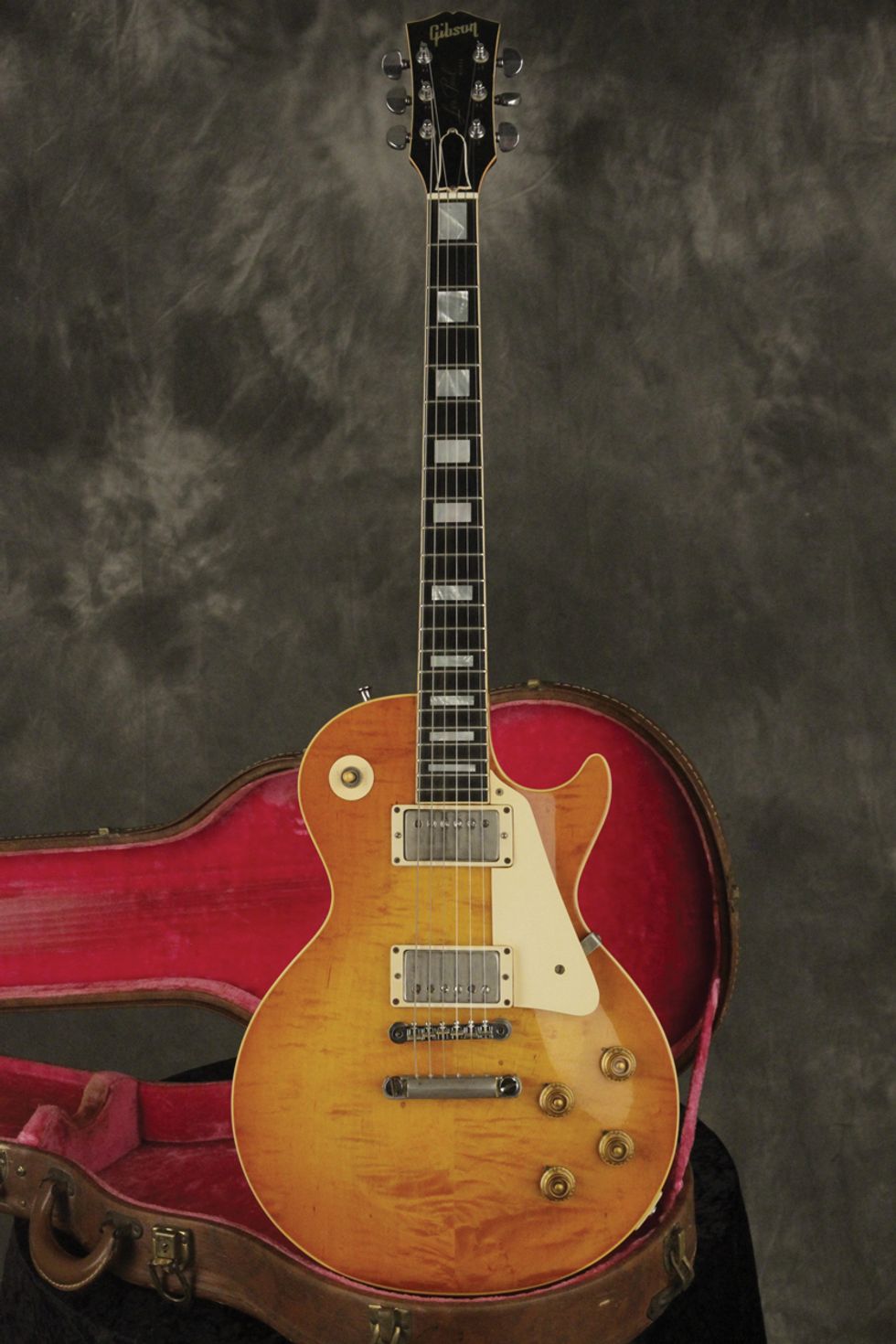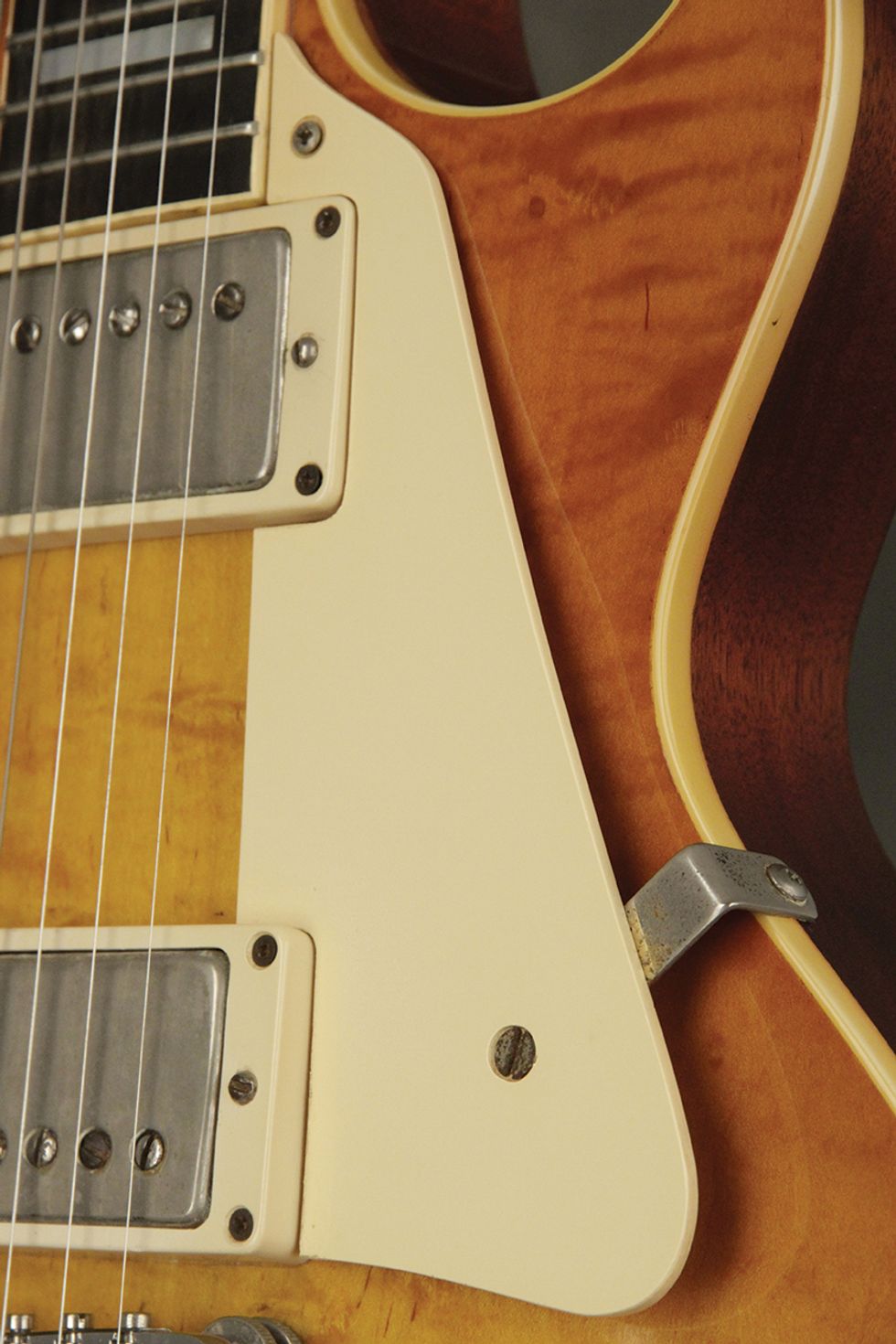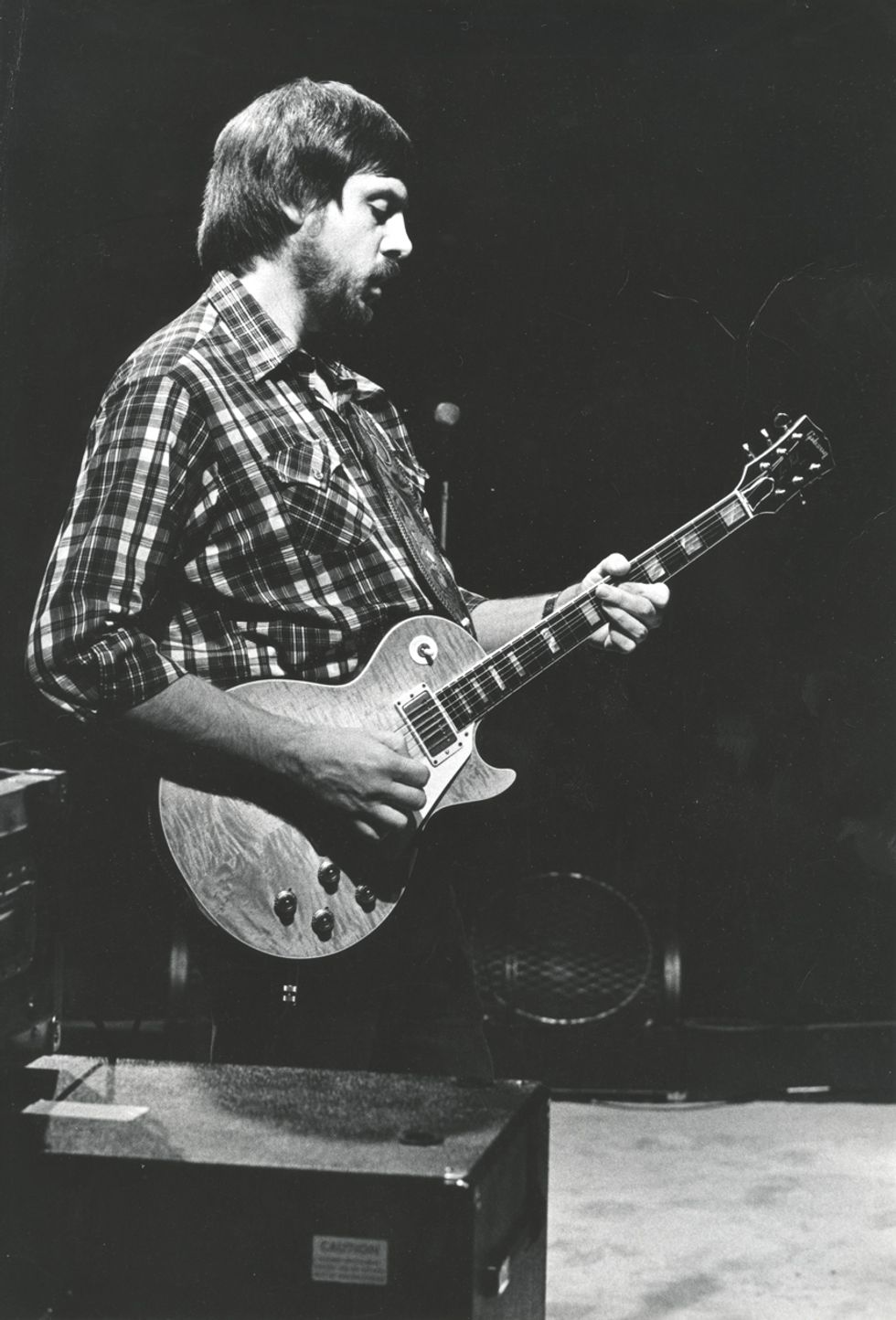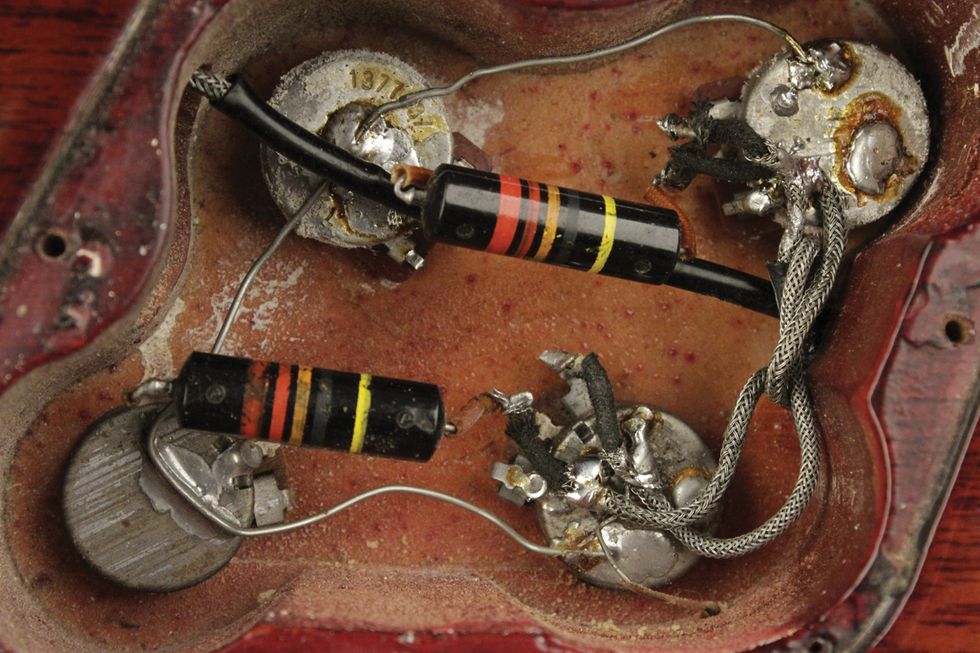It seems safe to assume that anyone reading this column likely knows the basics of late-’50s Gibson Les Paul “Bursts.” Sunburst-finished Les Pauls made between 1958 and late 1960 rank as some of the most coveted of all vintage guitars, and the market for these instruments is mostly made up of well-heeled aficionados who evaluate circulating specimens in terms of originality, pedigree, and caliber of flame top. The market goes up and down in different years, but generally top-tier Bursts with original parts and high-grade maple tops command prices in the $300,000 range.
This 1958 Les Paul is not in this vaunted collectors’ category. This guitar is from that second “player grade” tier of Les Pauls that have been altered, converted, and otherwise knocked off that all-original mantle—usually by a player who was just trying to set his or her guitar up to preferred specs. The player in this instance was the late Barry “Byrd” Burton, who is best known for his work as part of the Amazing Rhythm Aces, but was a sideman and session guitarist for many other acts during his career. Byrd used this Les Paul throughout. You can see it on YouTube in a 1977 episode of Austin City Limitsfeaturing the Aces.
The tweaks Byrd made to this guitar are extensive: The neck was shaved down, the headstock altered, and an ebony fretboard with Les Paul Custom-style inlays was installed. The pickups and finish are not original, and there are all kinds of holes, nicks, scratches, and surface cracks. The major work was done by Tom Keckler in Memphis—the town where Byrd played sessions at Sun Studio.
Although it’s not visually detectable, these aren’t the original PAFs that came with this guitar. However, Barry Burton documented all of the changes he made to his main instrument, in great detail, for its next owner.
In its Reverb.com listing for this instrument, online dealer Olivia’s Vintage notes that the 6-string comes with extensive “documentation indicating when changes were made to the guitar, along with original 8x10 photo prints, and copies of Byrd’s personal journal entries where he logged the process to the day.”
The late Barry “Byrd” Burton digs into his modded Les Paul onstage. He used the instrument that’s spotlighted this month throughout his career, which included turns with Dolly Parton, Dan Fogelberg, and Brooks & Dunn.
Clearly, Byrd put a lot of thought and consideration into the changes he made and was on a quest to make his Gibson play, sound, and look its best—at least to his taste. In the ’70s, he wasn’t thinking of it as a vintage collectible, but just as his instrument, and the alterations were done for that end alone.
This inside look indicates—via different types of wire and soldering that appears to be from varying eras—that work was done around the pots and capacitors on Burton’s guitar, too.
The guitar is currently listed for sale at $85,000, which, while certainly a lot of money, is significantly less than most ’58 Bursts and is, of course, reflective of the lack of PAF pickups, the altered neck and headstock, and all the other modifications and wear. If you do have in your heart the desire to own a vintage Les Paul, something like the Byrd Burst or its “player grade” relatives may carry a lot of asterisks, but ultimately, you’re buying a piece of history. In this case, it’s a unique one.











![Rig Rundown: Russian Circles’ Mike Sullivan [2025]](https://www.premierguitar.com/media-library/youtube.jpg?id=62303631&width=1245&height=700&quality=70&coordinates=0%2C0%2C0%2C0)

















